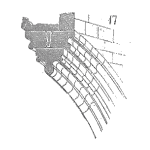A key preparation step for the CRE exam is to have and know how to use a simple calculator. I use my smartphone and a calculator app – and I would not be permitted to use the phone during the exam. Same with tablets, computers, and other common tools that we now take for granted. [Read more…]
Articles
Find all articles across all article series listed in reverse chronological order.
Product Reliability Participants part 6

In this installment of the series dealing with the myriad participants within an organization, we’ll start with failure analysis specialists, before moving to marketing and sales, and finally getting to the finance team. We’re moving away from the positions where the focus on reliability is central, but there are important considerations in relation to product reliability for each of these roles still. The next post in this series will be the final one. [Read more…]
Chebyshev’s Inequality

As with the Markov Inequality, we may find useful information from a list of values, say time to failure data. Again, none of the numbers may be negative for this to apply, yet with life data that is rarely the case.
Short on time- a common situation for reliability engineers; we have only the mean, standard deviation and number of values in a list. And, we need to say something about the data and the number or fraction of value above a specific value. [Read more…]
Markov Inequalities

If we have a list of numbers, saw cycles to failure for a test. None are negative. And, we do not have time for a complete analysis before being asked about the results.
What can we do?
In this case, the Markov Inequality may prove useful for a quick assessment of the results. [Read more…]
Product Reliability Participants part 5

Continuing the series where we examine various roles within an organization and the ways in which each role interacts and affects product reliability, this post will start off with procurement engineers and managers. Since each role hereafter is a bit less involved, multiple roles will be grouped together. After procurement, we’ll take a look at warranty managers. [Read more…]
Product Reliability Participants part 4

The last post moved into the role of quality and reliability engineers, and the influence that leadership in design and product development has on the product reliability process. Similarly, this post will move to Q & R managers, again looking at the role of that position in relation to product reliability.
Product Reliability Participants part 3

The last post in this series dealt with management in design and the influence that leadership in design and product development has on the product reliability process. This post will turn to quality and reliability (Q & R) engineers, again looking at the role of that position in relation to product reliability. The next post in this series will take a look at the role of quality and reliability managers. [Read more…]
Hypothesis Tests for Variance Case II

The chi-square (Χ2) test provides the basis for the second case of hypothesis tests for variances. In this case, we want to compare observed and expected frequencies, or counts, of outcomes when there is no defined variance. In other words, we are working with attribute data. [Read more…]
Product Reliability Participants – Part 2

The last post in this series dealt with the design team, and the influence that team has on the product reliability process. This post will turn to product development and design managers, again looking at the role of that position in relation to product reliability. The series of posts on reliability participants will continue after today’s post with the roles of quality and reliability engineers and managers.
Hypothesis Un-Equal Variance

Hypothesis testing of data may include two populations that have un-equal standard deviations. The t-test for differences considered in a previous post used the assumption of equal variances to pool the variance value. In this test, we want to consider if one population is different in some way than the other and we use the samples from each population directly even if the population have difference variances. [Read more…]
Product Reliability Participants – Part 1

An effective product reliability process requires a strong team, at every level. The team of employees within an organization that participate and impact product reliability is a vast and widespread group of people. They include members of the design team, design managers, quality and reliability engineers and managers, procurement engineers and managers, warranty managers, failure analysis specialists, members of the marketing and sales staff, members of the finance and manufacturing teams, and field service and call center staffs. [Read more…]
Reliability Organization – Part 2

Decision Focus and Value
Last week I discussed how the aspects of the structure of an organization relate to product reliability. Related to that, this week the discussion will remain on the level of a reliability organization but will look at something a bit more intangible – how decision-making policy and practice affects product reliability. [Read more…]
Reliability Organization – Part 1

Both organizational structure and decision-making policies have an impact on improving product reliability. The former is more quantifiable whereas the latter involves more intangible subtleties. First, in this post, I’ll discuss the connection between organizational structure and reliability, and in a follow-up post, I’ll address reliability and decision focus, still within the structure of an organization. [Read more…]
Equal Variance Hypothesis

Hypothesis testing of paired data may include two populations that have the equal standard deviations. The t-test for differences considered in a previous post used the standard deviation of the differences. In this test, we want to consider if one population is different in some way than the other and we use the samples from each population directly. [Read more…]
Paired-Comparison Hypothesis Tests

Hypothesis testing previously discussed (link to past posts) generally considered samples from two populations. Maybe the experiments explored design changes, different component vendors, or two groups of customers. Occasionally you may find data that has some relationship between the samples, or where the samples are from the same population. Paired (or matched) data involves samples that are related in some meaningful way. [Read more…]